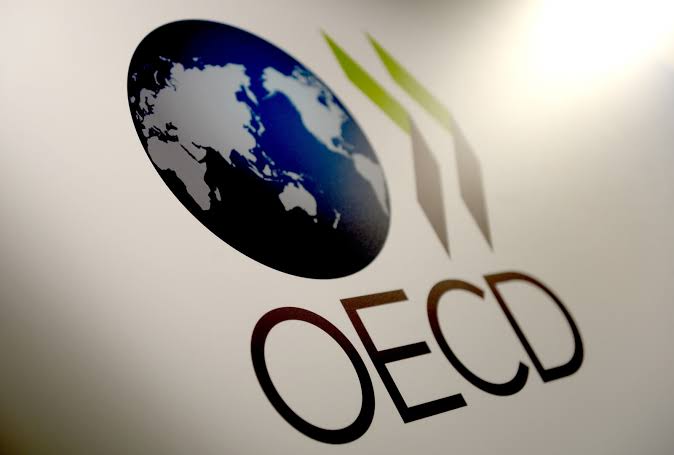By Dickson Pat
Organisation for Economic Cooperation and Development ,OECD, has sharply downgraded its global growth outlook for the coming years, citing rising protectionism, persistent inflationary pressures, and prolonged geopolitical uncertainty.
In its latest Economic Outlook report released Tuesday, the OECD now forecasts global economic growth will slow to 2.9% in both 2025 and 2026, down from earlier projections of 3.1% and 3.0%, respectively.
The Paris-based organisation warned that this slowdown is more pronounced than anticipated just a few months ago and is largely driven by the lingering fallout of trade policies initiated under former U.S. President Donald Trump.
These include a series of tariff increases that have disrupted global supply chains, inflated prices, and eroded investor and consumer confidence.
According to the OECD, the global economy expanded by 3.3% in 2024, but growth is now expected to moderate significantly in the years ahead.
The organisation warned that the outlook could deteriorate further if trade tensions intensify or new protectionist measures are introduced.
“Additional increases in trade barriers or prolonged policy uncertainty would further lower growth prospects and likely push inflation higher in countries imposing tariffs”, OECD Secretary-General Mathias Cormann said while presenting the report in Paris.
He cautioned that escalating trade restrictions could pose a serious threat to the post-pandemic recovery and undermine the long-term health of the global economy.
Cormann cited an OECD scenario in which the United States raises tariffs by an additional 10 percentage points on all trading partners compared to mid-May 2025 levels. Under this scenario, global output would be about 0.3% lower after two years, further straining already fragile economic momentum.
The United States, which has been at the center of recent trade disputes, is now projected to grow by just 1.6% in 2025 and 1.5% in 2026. These figures represent a significant downgrade from the OECD’s March estimates of 2.2% and 1.6% respectively.
While tariff increases have encouraged some re-shoring of manufacturing, the OECD warned that higher import costs are reducing consumers’ real income and dampening domestic demand. In addition, the persistent uncertainty surrounding trade and fiscal policy has restrained business investment.
The OECD also expressed concern over the U.S. fiscal trajectory. The effects of Trump’s 2017 Tax Cuts and Jobs Act—extended by recent policy decisions—combined with sluggish growth and new tax breaks, are expected to drive the U.S. budget deficit to 8% of GDP by 2026, one of the largest among advanced economies not engaged in wartime spending.
Amid these challenges, the U.S. Federal Reserve is expected to keep interest rates on hold through the remainder of this year before gradually reducing the federal funds rate to a range of 3.25% to 3.5% by the end of 2026 to support the slowing economy.
The OECD concluded its report with a strong appeal for multilateral cooperation, urging governments to avoid further trade hostilities and instead pursue constructive dialogue to reduce economic uncertainty.
“The key policy priorities in this context are constructive dialogue to ensure a lasting resolution to current trade tensions”, Cormann said.
With economic headwinds building and the threat of further fragmentation looming, the OECD emphasized that maintaining open trade, restoring investor confidence, and ensuring policy predictability are essential for safeguarding the global recovery and ensuring sustainable, inclusive growth.





